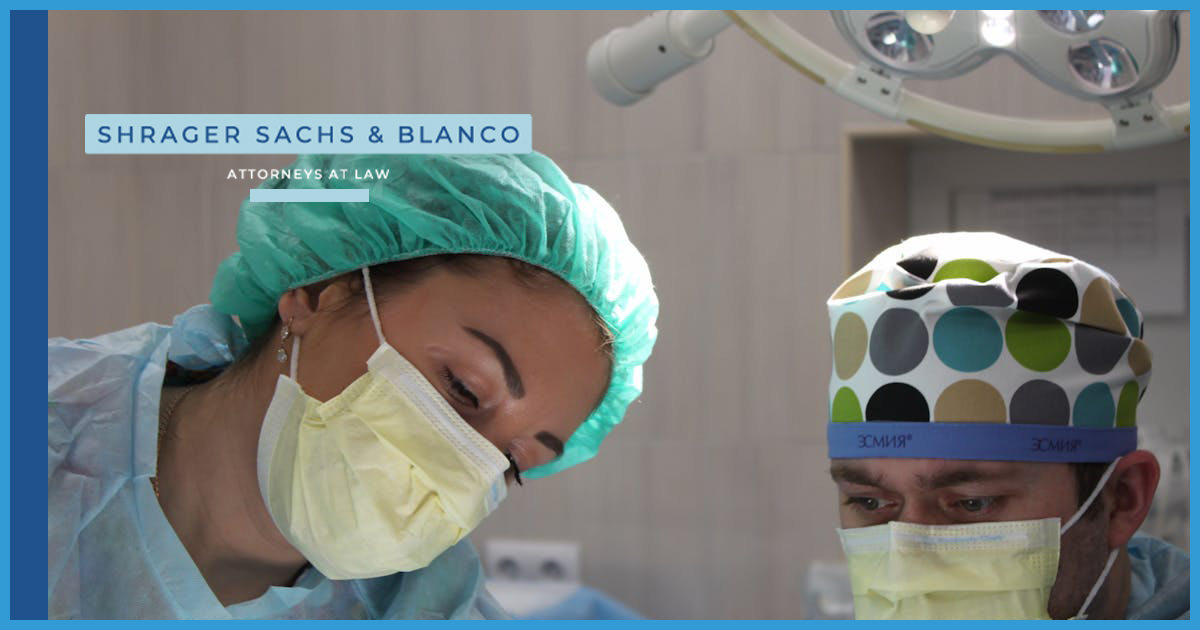When you see your doctor or get a procedure done, you expect the medical professionals involved in your care to adhere to certain standards and safety measures. However, that doesn’t always happen, and if a doctor, surgeon, or any other medical professional makes a mistake while caring for a patient, it results in malpractice, and the outcome can be damaging to the patient.
So, what are the most common types of medical malpractice claims?
We’ll go through some of the main types in this blog, what causes them to occur, how they can affect a patient, and what you can do if you’ve suffered from medical negligence.
Top Types of Malpractice Claims
Unfortunately, medical malpractice occurs far too often, even though it is largely preventable.
According to the World Health Organization (WHO), around 1 in every 10 patients is harmed in health care globally, and more than 300 million deaths occur annually due to unsafe care. It’s a huge problem, which is why it’s important to understand the wide variety of medical mistakes that can be made.
We’ve listed out the most common mistakes medical professionals make that cause harm to their patients. They are:
Misdiagnosis or Delayed Diagnosis
A proper diagnosis is essential for every patient, and when a patient is misdiagnosed, or a doctor delays a diagnosis, it often causes the patient’s current illness to worsen and new health issues to arise.
According to a research article from BMJ Quality & Safety, an estimated 795,000 patients die or are permanently disabled due to diagnostic errors each year.
Cancer is considered the most common misdiagnosis in the medical field, with breast cancer, cervical cancer, prostate cancer, and colon cancer being the most commonly misdiagnosed conditions. Infections and vascular events are the next most commonly misdiagnosed health issues.
Surgical Errors
People make mistakes all the time, but when a surgeon who has been trained and educated on proper techniques and protocols makes a mistake, it might cost a patient their health or their life. Data from the National Library of Medicine (NLM) shows that at least 4,000 surgical errors occur in the United States each year and that operating on the wrong body part is a common source of this type of error.
Most surgical errors are caused by any of the following:
- Lack of education or training
- Miscommunication or lack of communication between the surgeon and other medical staff
- Miscommunication between the surgeon and the patient
- Unreliable systems or protocols
- Absence of standardized rules and regulations
- Human error
Birth Injuries
A birth-related injury is generally defined as an impairment due to an adverse event that occurs at birth; however, this also can include injuries that occur during pregnancy and labor as well. According to the Centers for Disease Control and Prevention (CDC), there were 132,622 births in Pennsylvania in 2021.
It’s estimated that 7 out of every 1,000 babies are born with some form of birth injury, which means approximately 928 babies were born with birth injuries in Pennsylvania in 2021.
Some severe or even fatal childbirth injuries can be caused by:
- Delayed birth: Also called prolonged labor, it can make it difficult for a baby to move through the birth canal, which results in nerve and muscle damage
- Improper use of delivery tools: Doctors sometimes rely on such tools as forceps or vacuum extractors, which can cause hemorrhage and brain damage
- Monitoring and delivery issues: Failure to catch health problems before birth or a doctor allowing for a vaginal birth (as opposed to a cesarean section) can cause harm if the mother and baby were not properly monitored
- Oxygen deprivation: A situation such as a wrapped or blocked umbilical cord or a baby stuck in the birth canal for too long causes the baby to be deprived of oxygen and can lead to severe disabilities such as cerebral palsy
Medication Errors
Errors in dosages or improperly prescribed medications cost the lives of thousands of Americans every year, approximately 7,000 to 9,000, according to data from the National Library of Medicine (NLM).
These errors can occur at any point during the patient care process, from initial diagnosis to when the medication is administered, but most often, they happen during the ordering or prescribing stage.
The data from the NLM article shows that ordering errors account for almost 50% of all medication errors, and this typically occurs when a doctor prescribes the wrong medication, the wrong route or dose, or the wrong frequency.
Failure To Treat
While the failure to treat a patient often coincides with a misdiagnosis or failure to diagnose, sometimes it is an intentional choice by the doctor or other health care professionals. When patients go untreated, their conditions can worsen, and in some cases, failure to treat them can lead to severe illness, injury, or even death.
Examples of failure to treat include:
- Not properly monitoring a patient’s condition
- Not referring a patient to a specialist
- Not informing a patient of all available treatment options
- Not providing medical care due to insurance issues
- Not performing necessary testing
- Not treating a medical condition in a timely manner (or at all)
Anesthesia Errors
Often considered one of the most delicate and complex parts of any procedure, anesthesia is important to keep a patient properly sedated, and when errors are made, it could cause a patient to wake up too soon or even cost the patient their life. A study on the causes of anesthesia errors from the National Library of Medicine shows the main reasons for these errors are:
- The complexity of anesthesia
- Lack of communication
- Negligence
- Human-related errors
- Medication administration errors
Defective Medical Equipment
Medical devices and equipment are delicate and must be kept sterile and in good working order.
If a medical device, such as a pacemaker, is improperly placed within a patient or is not kept sterile before placement, it can cause harm to the patient and require further medical intervention. Additionally, equipment such as heart monitors and ventilators need to be maintained. If equipment fails, it can harm the patient or even cause their death.
What To Do If You’re Suffering From Medical Negligence
Medical malpractice is unfortunately all too common, even with many safety protocols in place, and in order to pursue a claim, your medical malpractice lawyer from Shrager, Sachs & Blanco will need to prove the following elements of negligence
- Duty of care: The doctor or health care professional owed you (the patient) a duty of care to correctly manage your health
- Breach of that duty: The doctor or other provider breached that duty when they made a mistake during your care
- That breach caused an injury: The mistake that the physician or practitioner made led to your injury or illness
- The injury resulted in damages: The injury or illness you now have caused damages such as extensive medical bills, poor health, etc.
If you or someone you know underwent a procedure and you believe that any of the previously mentioned types of malpractice happened to you, an experienced lawyer can help you









